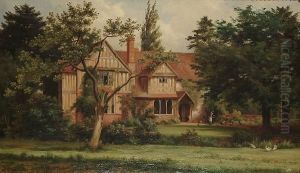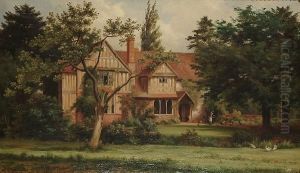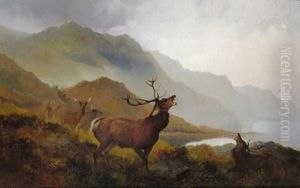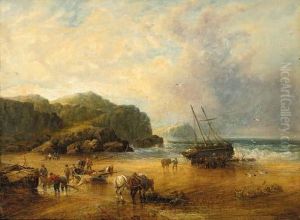J. H. Gibb Paintings
James Henry Gibb, commonly known as J. H. Gibb, was a British artist born in 1837 and passed away in 1902. His life and career spanned the 19th century, a period that was characterized by significant transformations in the art world, including the rise of Romanticism, Realism, and the early stages of Impressionism. Despite these evolving artistic movements, Gibb's work remained deeply rooted in the traditions of landscape and marine painting, reflecting the enduring appeal of these genres in British art.
Gibb's artistic journey began in the midst of the Victorian era, a time when the British Empire was at its zenith, and there was a growing interest in capturing the beauty and complexity of the natural world. This era also saw the establishment of art schools and societies that played a crucial role in shaping the careers of artists, including Gibb. Although not much is widely known about his formal training, it is evident from his technique and compositions that he was well-versed in the fundamental principles of painting and had a keen eye for detail.
Throughout his career, J. H. Gibb focused primarily on landscapes and seascapes, often depicting scenes from the British Isles. His works are characterized by their meticulous attention to the subtleties of light and atmosphere, capturing the changing moods of the sea and the landscape with a delicate touch. Gibb's paintings often convey a sense of tranquility and timelessness, inviting the viewer to step into a world untouched by the rapid changes of the industrial age.
Despite his talents, J. H. Gibb did not gain the same level of fame as some of his contemporaries. However, his contributions to British art have been appreciated by those who recognize the skill and sensitivity with which he portrayed the natural world. Today, his works can be found in private collections and occasionally appear in auctions, where they are sought after by collectors who appreciate the quiet beauty and technical proficiency of his paintings.
In summary, James Henry Gibb was a skilled British artist whose work reflects the enduring appeal of landscape and marine painting in the 19th century. His ability to capture the essence of the natural world with subtlety and depth ensures that his art continues to be appreciated by those who encounter it, even though his name may not be as widely recognized as some of his peers.




